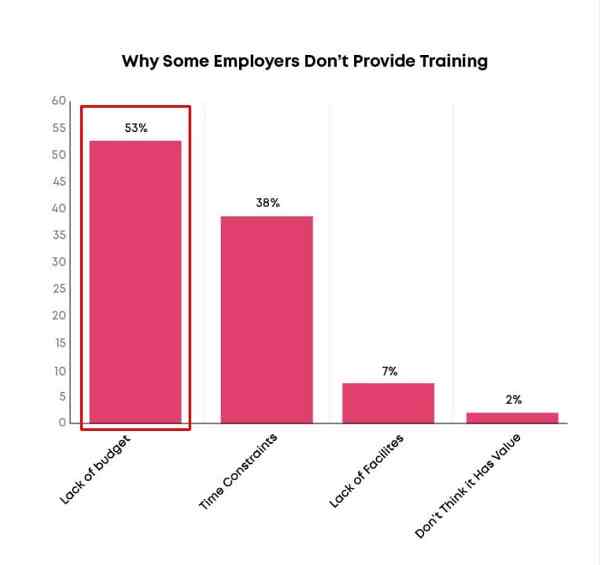Show employees you’re committed to their growth with training, and they’ll stick to your company like super glue.
By Max Woolf
Meet Sophia—matte black frame glasses. She’s a rockstar who can do the job in her sleep.
The problem? As the new car smell of the job wore off, Sophia has plateaued: She doesn’t get enough opportunities to develop her skill sets and grow professionally.
The result? Sophia will soon call it quits akin to 56% of employees who don’t receive quality training.
The good news? You’re about to learn how to provide staffers with training and torpedo turnover. Strap in.
Figure the Ultimate Goal
First things first. Before you step into the unknown and start to offer training, you need to set measurable goals and outcomes. Otherwise, you’ll burn through cash without getting tangible ROI. Here’s how to do it:
- Teach why before how. Always explain why to learn something and how employees will use the knowledge.
- Set measurable goals. Figure out what staffers should be able to do when the training is over.
- Right: Learn how to perform a check for broken backlinks without supervision one week after the training.
- Wrong: Read about how to use Google Search Console.
- Stay on top of things. Monitor how the training goes. Check in with staffers on how they’re doing and if there are roadblocks.
You can use the survey tool Survey Monkey to collect feedback. Fine-tune when necessary and adjust the training based on feedback.
Also, introduce a Personal Development Fund. How does it work? You set an annual budget ($100,00) for all employees. They can, in turn, use a certain portion of it to pick or improve skills. Here are some ideas on how staffers can use the budget:
- Find an industry expert to get (online) mentorship.
- Sign up for an online course (e.g., on Coursera, or FutureLearn.)
- Attend a (local) workshop.
- Get a book.
Most companies don’t introduce training because they don’t have a large cash reserve or deep-pocketed investors.

Source
Just ask some of your top performers to pass wisdom and share their skill sets. In exchange, reward the A+ players with extra days off, remote days, or a monetary bonus.
Here are three ideas to use high-flyers to coach staffers:
- Set up a recurring 1:1 meeting for the next 3–5 weeks between a top performer and a low performer.
- Allow the low-performing employee to shadow an A+ player until performance spikes.
- Ask top performers to share knowledge by running weekly company-wide workshops.
Put Things into Practice
So you’ve introduced employee training. Things went silky smooth, and staffers supposedly picked a boatload of skills. Fast forward two months, you realize the training had the same impact as a fly on a windshield. What happened?
You didn’t put things into practice. Employees never got to use the new skills and forgot them in a flash. The solution is to always get employees to get extensive hands-on experience. As 70:20:10 model argues, people learn through doing 70% of the time. The other 20% and 10% come from other people and courses.
What’s your experience with training employees? What strategies do you use to equip staffers with new skill sets and thus keep them onboard?
Drop me a line in the comments. I’d love to chat!
Max Woolf is a writer at ResumeLab. He’s passionate about helping people land their dream jobs through the expert career industry coverage. In his spare time, Max enjoys biking and traveling to European countries. You can hit him up on LinkedIn.
Training stock photo by nd3000/Shutterstock







